Home
3.0 Street Design Guidance
Search Content
Download PDF
Print Guide
- 3.1 Introduction
- 3.2 Sidewalks
- 3.3 Boulevards and furnishings
- 3.4 Bikeways
- 3.4A Introduction and general guidance
- 3.4B Protected bike lanes introduction
- 3.4C Delineator-protected bike lanes
- 3.4D Planter-protected bike lanes
- 3.4E In-street curb-protected bike lanes
- 3.4F Sidewalk-level protected bike lanes
- 3.4G Shared use paths
- 3.4H Neighborhood greenways
- 3.4I Neighborhood greenways: full greenways
- 3.4J Neighborhood greenways: bicycle boulevards
- 3.4K Bike lanes, unprotected
- 3.4L Buffered bike lanes, unprotected
- 3.4M Contraflow bike lanes
- 3.4N Advisory bike lanes
- 3.5 Transit stops
- 3.6 Roadways
- 3.7 Intersections
